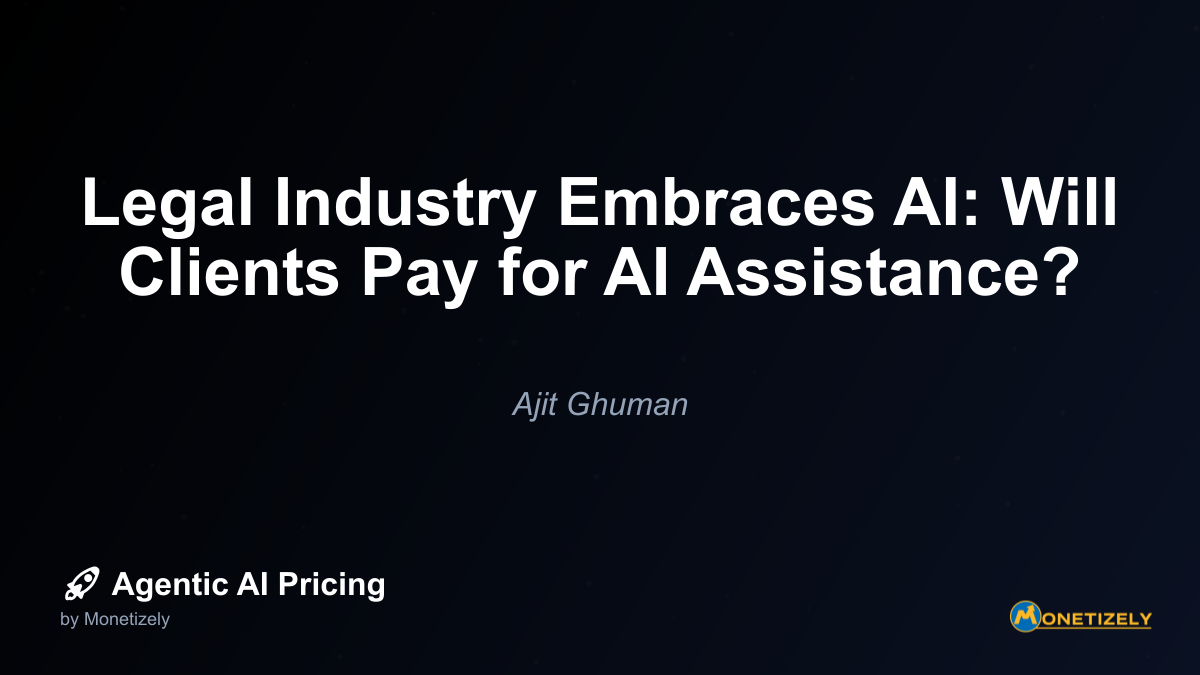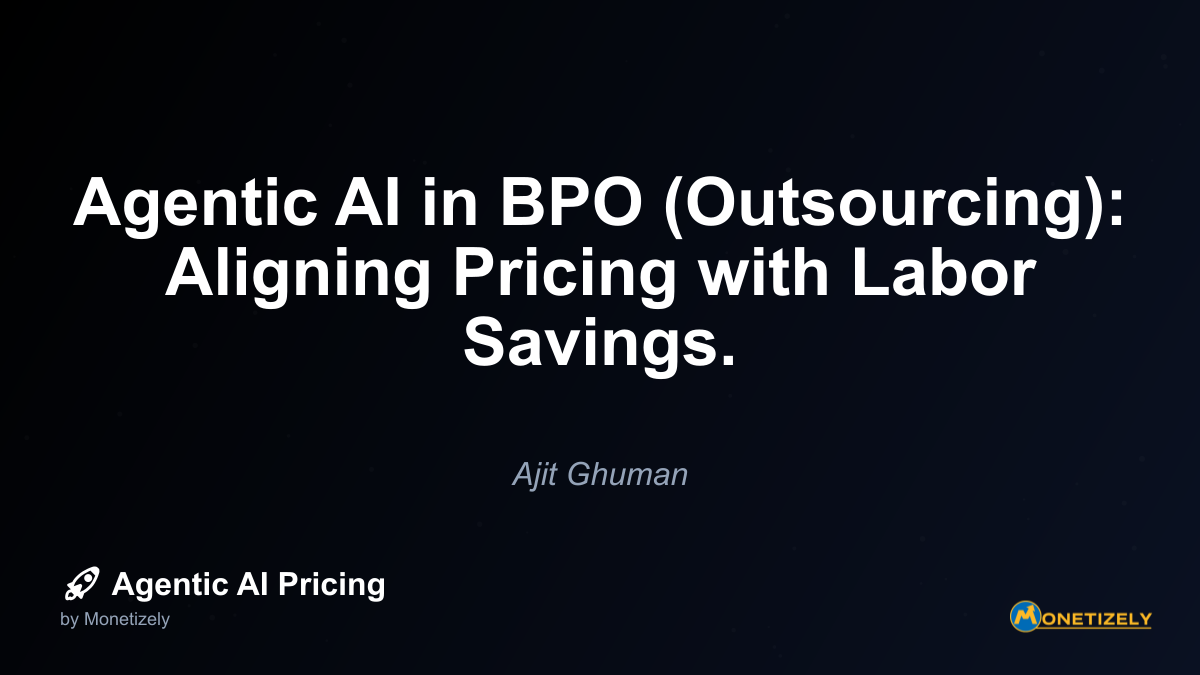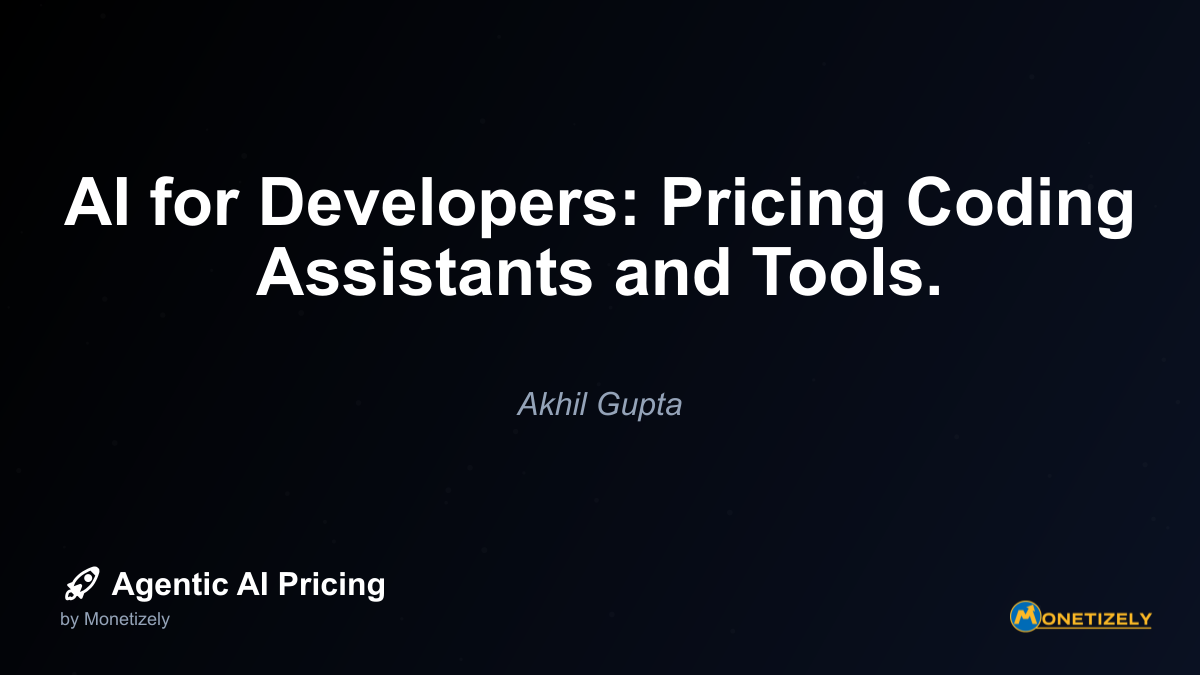· Ajit Ghuman · Industry Insights · 11 min read
Legal Industry Embraces AI: Will Clients Pay for AI Assistance?
AI and SaaS Pricing Masterclass
Learn the art of strategic pricing directly from industry experts. Our comprehensive course provides frameworks and methodologies for optimizing your pricing strategy in the evolving AI landscape. Earn a professional certification that can be imported directly to your LinkedIn profile.

In an industry built on precedent and tradition, artificial intelligence has emerged as a disruptive force reshaping how legal services are delivered. Law firms across the globe are increasingly integrating AI-powered tools into their workflows, from automated document review to sophisticated legal research assistants. This technological transformation raises critical questions about client billing practices and value perception in an industry where time has traditionally equaled money.
The legal sector’s cautious embrace of AI technologies represents a significant shift in a profession known for its conservative approach to change. As these tools demonstrate their ability to enhance efficiency and accuracy, law firms face the complex challenge of determining how to price AI-assisted work in a way that reflects its value while remaining palatable to clients accustomed to traditional billing models.
The Current State of AI Adoption in Legal Services
The legal industry’s relationship with artificial intelligence has evolved from skepticism to strategic implementation. Today’s law firms are deploying AI across multiple practice areas:
Document Review and Due Diligence: AI systems can analyze thousands of documents in a fraction of the time it would take human lawyers, identifying relevant clauses, potential risks, and inconsistencies with remarkable accuracy. Tools like Kira Systems, Luminance, and eBrevia have become increasingly common in transactional practices.
Legal Research: AI-powered platforms such as ROSS Intelligence, Casetext, and LexisNexis’ Lexis+ AI can sift through vast databases of case law and statutes to identify relevant precedents and legal arguments, significantly reducing research time.
Contract Analysis: AI tools can extract key provisions, flag unusual terms, and compare agreements against standard templates, streamlining contract review processes that traditionally consumed countless associate hours.
Predictive Analytics: Some firms now employ AI to analyze historical case outcomes, judicial tendencies, and opposing counsel patterns to develop more effective litigation strategies and provide clients with data-driven risk assessments.
Administrative Automation: Beyond direct legal work, AI is transforming back-office functions through automated billing, client intake processes, and document management.
According to a 2023 Thomson Reuters survey, 58% of law firms reported using some form of AI in their practice, with an additional 27% actively exploring implementation options. This represents a dramatic increase from just five years earlier, when only 23% of firms reported AI adoption.
The Billing Conundrum: Charging for AI-Assisted Work
The integration of AI into legal practice creates a fundamental tension with the industry’s traditional billing model. When a task that once required 20 associate hours can be completed by AI in 30 minutes with human supervision, how should that work be priced?
Several approaches have emerged:
1. Value-Based Pricing
Some forward-thinking firms have moved away from the billable hour entirely, instead pricing their services based on the value delivered to clients. Under this model, the efficiency gains from AI directly benefit the firm’s profitability while potentially reducing client costs.
Kirkland & Ellis, for example, has implemented value-based pricing for certain transactional matters where AI significantly reduces document review time. Their approach focuses client conversations on outcomes rather than hours, positioning AI as a quality enhancement rather than a cost-cutting measure.
2. Transparency with Technology Fees
Other firms maintain hourly billing but add separate line items for technology usage. This approach treats AI as a specialized tool that delivers enhanced value deserving of its own charge.
Reed Smith has pioneered this approach with their “Reed Smith Difference” program, which explicitly includes AI usage as a billable component while providing clients with detailed explanations of how the technology improves outcomes.
3. Hybrid Models
Many firms are experimenting with hybrid approaches that combine elements of hourly billing with fixed fees for AI-assisted components. This allows them to maintain familiar billing structures while accounting for the efficiency gains of technology.
Morgan Lewis uses a hybrid model for due diligence work, charging standard hourly rates for attorney oversight while applying fixed fees for the AI-powered document review portion, resulting in overall cost savings compared to traditional methods.
4. AI as Value-Add
Some firms, particularly those in highly competitive practice areas, position AI capabilities as a value-add rather than a billable component. This approach uses technology as a competitive differentiator to secure client relationships.
Latham & Watkins has incorporated AI-powered contract analysis into their service offering without additional charges, instead using the efficiency gains to deepen client relationships and secure more complex, higher-margin work.
Client Perspectives: Willingness to Pay for AI Assistance
The critical question for law firms isn’t just how to bill for AI-assisted work, but whether clients are willing to pay for it. Research suggests the answer is nuanced and depends significantly on how the value proposition is framed.
High Willingness to Pay for Efficiency and Quality
Contrary to what some might expect, studies indicate that legal clients—particularly sophisticated corporate clients—often demonstrate a high willingness to pay for AI-enhanced services when they deliver tangible benefits:
Time Sensitivity: In time-critical matters like M&A due diligence or litigation with tight deadlines, clients show significant willingness to pay premium rates for AI-accelerated work. A 2023 study by ALM Intelligence found that 67% of corporate legal departments would pay higher rates for AI-assisted work that delivered results in half the time.
Risk Reduction: When AI demonstrably reduces legal risk through more comprehensive analysis, clients typically perceive high value. The same ALM study found that 74% of clients would pay premium rates for AI tools that identified risks human reviewers might miss.
Predictability: AI’s ability to provide more accurate cost estimates and timelines appeals strongly to corporate legal departments operating under strict budgets. According to PwC’s 2023 Legal Department Survey, 83% of legal departments ranked predictability as “very important” or “critically important” in selecting outside counsel.
Resistance Points and Concerns
Despite general openness to paying for AI-enhanced legal services, clients express several common concerns:
Transparency Gaps: Clients frequently object to technology fees when firms fail to clearly articulate the specific benefits delivered. Vague line items like “AI processing fee” without explanation meet significant resistance.
Double Charging: Sophisticated clients resist paying both for the technology and for attorney time at full rates to review the technology’s output, viewing this as paying twice for the same work.
Commoditized Work: For routine, commoditized legal tasks, clients increasingly expect AI efficiencies to reduce costs rather than maintain or increase them. This is particularly true in areas like basic contract review or standard compliance work.
Training Concerns: Some clients have pushed back against paying for what they perceive as the firm’s investment in developing AI capabilities, arguing that they shouldn’t bear the cost of the firm’s technology learning curve.
Effective Pricing Strategies for AI-Enhanced Legal Services
Law firms successfully integrating AI into their billing models typically employ several key strategies:
1. Demonstrating Concrete Value
Successful firms focus relentlessly on quantifying and communicating the specific value their AI tools deliver. Rather than abstract claims about efficiency, they provide concrete metrics:
“Our AI-powered due diligence process reviewed 10,000 documents in 48 hours, identifying 27 potential regulatory issues that would have required approximately 200 associate hours to discover manually.”
2. Outcome-Based Pricing Tiers
Some firms offer clients multiple pricing options for AI-assisted work, allowing them to choose their preferred balance of human and machine involvement:
- Standard Tier: AI-assisted review with comprehensive attorney oversight
- Accelerated Tier: AI-assisted review with targeted attorney oversight of high-risk items
- Premium Tier: AI-assisted review with specialized attorney analysis of strategic implications
3. Collaborative Technology Development
Forward-thinking firms involve key clients in their AI development process, creating shared investment in the technology’s success and greater client buy-in for associated fees.
DLA Piper’s “Law& Program” invites major clients to participate in developing customized AI solutions for their specific legal needs, creating proprietary tools that clients willingly pay to access.
4. Transparent Fee Structures
Successful AI billing models feature exceptional transparency about what technology is being used, how it enhances the work product, and exactly what clients are paying for.
Clifford Chance provides clients with detailed AI impact statements that quantify time saved, additional issues identified, and risk reduction achieved through their proprietary AI tools.
Case Studies: Successful AI Pricing Models in Practice
Litigation Prediction at Quinn Emanuel
Quinn Emanuel Urquhart & Sullivan developed a proprietary AI litigation prediction tool that analyzes thousands of previous cases to forecast likely outcomes based on judge, jurisdiction, opposing counsel, and case facts. Rather than charging for the technology directly, the firm incorporates it into a success-based fee structure where clients pay premium rates only when predictions prove accurate and cases resolve favorably.
This approach has proven remarkably successful with corporate clients, who appreciate the alignment of incentives and the firm’s confidence in its technology. By focusing on outcomes rather than the technology itself, Quinn Emanuel has achieved client acceptance of premium pricing while differentiating their services in a crowded litigation market.
Transactional AI at Allen & Overy
Allen & Overy’s “Fuse” innovation hub developed an AI-powered transaction management platform that streamlines complex multi-jurisdictional deals. The firm offers this technology as part of a fixed-fee package for transaction management, with pricing based on deal complexity and value rather than time spent.
By shifting the conversation from hours saved to risk managed, Allen & Overy has successfully implemented premium pricing for AI-assisted transactional work. Their approach emphasizes the comprehensive risk management benefits of AI review rather than just efficiency gains.
Compliance Monitoring at Eversheds Sutherland
Eversheds Sutherland developed an AI-based continuous compliance monitoring system for financial services clients that automatically flags potential regulatory issues in real-time. The firm offers this as a subscription service with tiered pricing based on the complexity of the regulatory environment and the volume of monitored communications.
This subscription model has proven particularly effective, as it transforms what was traditionally episodic legal work into an ongoing service relationship. Clients have demonstrated high willingness to pay for the proactive risk management this approach provides, with 92% renewal rates and average subscription growth of 18% annually.
The Future of AI Pricing in Legal Services
As AI technology continues to evolve, several emerging trends will likely shape pricing models in the legal industry:
1. Outcome Guarantees
Some firms are beginning to experiment with guarantee-based pricing for AI-assisted work, offering clients partial fee refunds if the technology fails to deliver specified outcomes or accuracy levels. This approach transfers some technology risk from client to firm, justifying premium pricing.
2. Bundled AI Capabilities
Rather than charging separately for specific AI tools, firms are increasingly bundling comprehensive AI capabilities into practice-specific service packages. This approach simplifies client understanding and reduces resistance to technology fees.
3. Client-Specific AI Development
The most sophisticated firms are developing customized AI solutions for specific client needs, creating proprietary tools that deliver unique value impossible to directly compare with competitors. This approach supports premium pricing by eliminating direct price comparisons.
4. Expertise-Technology Balance
Successful pricing models increasingly differentiate between commodity-level AI applications (where clients expect cost reduction) and expertise-enhanced AI applications (where clients demonstrate willingness to pay premiums). This nuanced approach allows firms to capture value where AI truly enhances attorney expertise while remaining competitive on routine matters.
Practical Implementation Guide for Law Firms
For law firms considering how to price their AI-assisted services, the following implementation framework offers a structured approach:
Audit Current AI Capabilities: Catalog existing AI tools and their specific impact on efficiency, quality, and risk management for different practice areas.
Segment Client Base: Analyze client portfolios to identify segments with different sensitivity to price versus value, time sensitivity, and risk tolerance.
Develop Tiered Offerings: Create multiple service tiers with varying levels of AI assistance and human oversight, allowing clients to select their preferred balance.
Implement Value Metrics: Establish concrete measurements of AI value delivery that can be communicated to clients, such as time saved, additional issues identified, or risk reduction achieved.
Train Client-Facing Teams: Ensure attorneys and business development professionals can effectively articulate the specific value of AI-assisted services rather than focusing solely on the technology itself.
Gather Feedback and Iterate: Continuously collect client feedback on AI pricing models and refine approaches based on market response.
Conclusion
The legal industry stands at a critical inflection point in its relationship with artificial intelligence. As these technologies become increasingly sophisticated and ubiquitous, firms that develop thoughtful, value-oriented pricing models will gain significant competitive advantages.
The evidence suggests that clients are indeed willing to pay for AI-assisted legal work—not because of the technology itself, but because of the tangible benefits it delivers in terms of speed, accuracy, risk management, and predictability. Successful firms focus not on selling AI, but on selling better outcomes enabled by AI.
For law firm leaders navigating this evolving landscape, the key lies in aligning pricing strategies with actual client value creation rather than internal cost structures. By demonstrating how AI enhances rather than replaces attorney expertise, firms can maintain premium pricing while delivering greater efficiency.
As the legal industry continues its technological transformation, those firms that view AI not merely as a cost-saving tool but as a value-enhancing capability will find themselves well-positioned to thrive in an increasingly competitive market where clients expect both technological sophistication and human expertise.
Co-Founder & CEO
Ajit is the author of Price To Scale, a top book on SaaS Pricing and is the Founder of Monetizely. Ajit has led and worked in pricing and product marketing at firms like Twilio, Narvar and Medallia. His work has been featured in Forbes and VentureBeat. Ajit regularly consults with software companies from Seed stage to post-IPO on pricing strategy. Ajit is also a highly-rated co-instructor for 'The Art of SaaS Pricing and Monetization' on Maven.
Pricing Strategy Audit
Let our experts analyze your current pricing strategy and identify opportunities for improvement. Our data-driven assessment will help you unlock untapped revenue potential and optimize your AI pricing approach.




